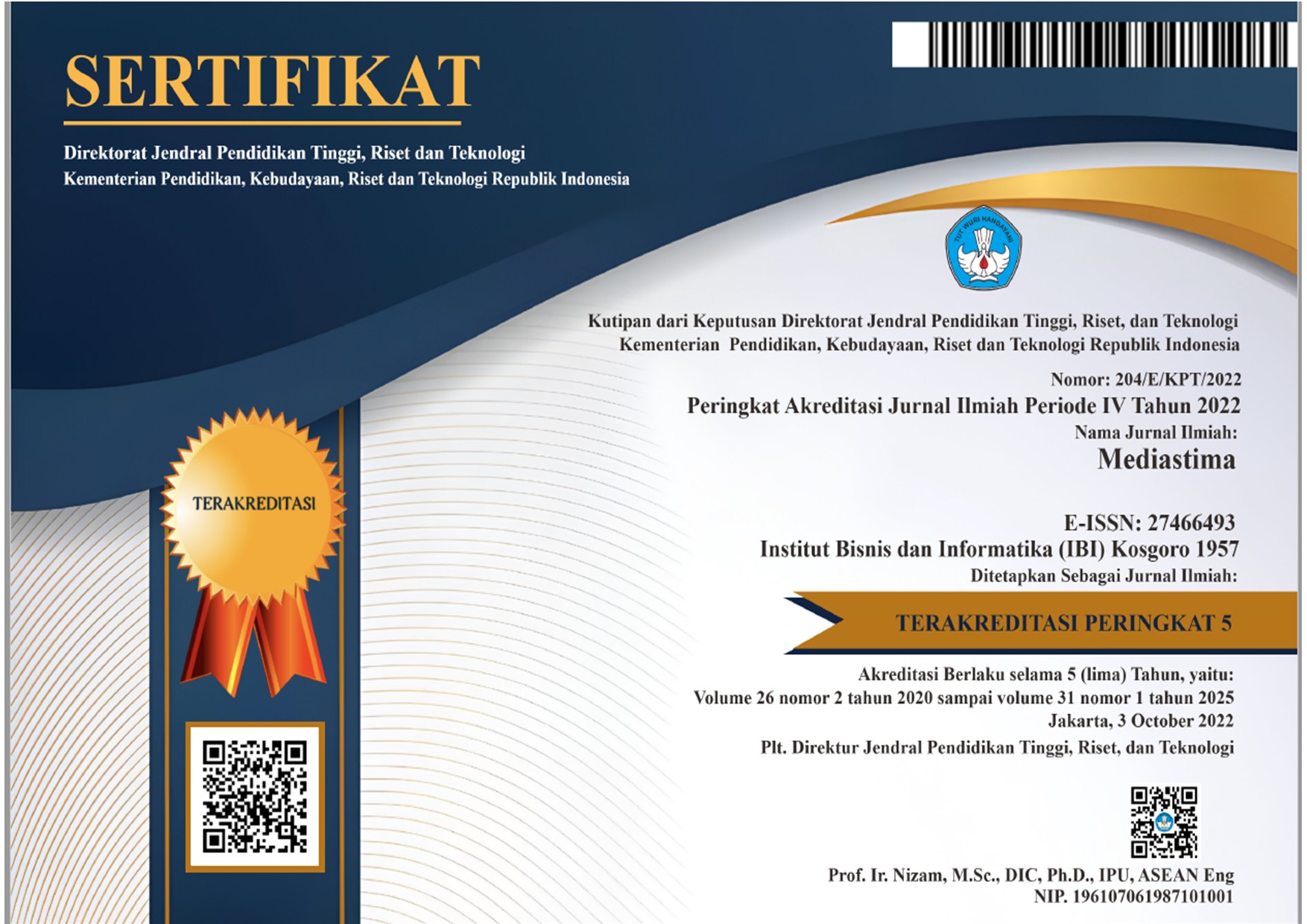Unveiling the Black Box: How Employer Branding Drives Employee Engagement - Evidence from PT Gardamas Surya Lestari, Indonesia
DOI:
https://doi.org/10.55122/mediastima.v30i1.1245Keywords:
Employer Branding, Employee EngagementAbstract
The global competition for top talent is intensifying. Employer branding, as a strategy to build a company's image as an attractive place to work, is becoming increasingly important in attracting and retaining quality employees. However, there are still few studies that examine how employer branding specifically drives employee engagement in Indonesia. This research aims to understand how employer branding drives employee engagement at PT Gardamas Surya Lestari, Indonesia. This research uses a qualitative method with a single case study. Data was collected through in-depth interviews with the Company Leader, HRD Manager and Employees of PT Gardamas Surya Lestari. The results showed that employer branding of PT Gardamas Surya Lestari has a positive influence on employee engagement. This is achieved through three main mechanisms: First, building a strong corporate identity and values: PT Gardamas Surya Lestari has built a strong corporate identity and values, which are consistently communicated to employees through various channels. Second, creating a positive work culture: The work culture at PT Gardamas Surya Lestari supports employee engagement by providing employees with opportunities to learn and develop, and feel valued and respected. The third research result is by offering attractive programmes and benefits: PT Gardamas Surya Lestari offers attractive programmes and benefits for employees, including competitive salaries and benefits, career development opportunities, and a conducive work environment.
References
Ambler, T., & Barrow, S. (1996). The Employer Brand: Developing A Competitive Advantage. London: Kogan Page.
Armstrong, M., & Baron, A. (2004). Strategic Human Resource Management: A Guide To Effective People Management. Kogan Page Publishers.
Backhaus, K., Tikoo, S., & Ramaswamy, K. (2014). The Relationship Between Employer Branding And Employee Engagement. Journal of Applied Psychology, 99(2), 224-245.
Bakker, A. B., & Demerouti, E. (2007). The Job Demands-Resources Model: State Of The Art. Journal of Managerial Psychology, 22(3), 309-328.
Berthon, P. (2005). From Employer Branding To Employer Of Choice. International Journal of Human Resource Management, 16(8), 1159-1185.
Berthon, P., Ewing, M. T., & Napoli, J. (2005). Employer Branding: Building A Competitive Advantage. Journal of Business Research, 58(1), 48-57.
Cable, D. M., & Turban, D. B. (2020). The Value Of Organizational Reputation In The Employment Relationship. Journal of Applied Psychology, 105(2), 146-171.
Cascio, W. F. (2006). Managing Human Resources: Productivity, Quality, And Cost Effectiveness. New York: McGraw-Hill.
Chawla, P. (2020), "Impact of employer branding on employee engagement in business process outsourcing (BPO) sector in India: mediating effect of person–organization fit", Industrial and Commercial Training, Vol. 52 No. 1, pp. 35-49. https://doi.org/10.1108/ICT-06-2019-0063
Davies, G., Mete, M. and Whelan, S. (2018), "When employer brand image aids employee satisfaction and engagement", Journal of Organizational Effectiveness: People and Performance, Vol. 5 No. 1, pp. 64-80. https://doi.org/10.1108/JOEPP-03-2017-0028
Dutton, J. E. (2009). What Is The Future Of Work? The Importance Of Employee Experience. In The Future Of Work: How Emerging Technologies Are Shaping The Workplace Of Tomorrow (pp. 23-44). Palgrave Macmillan
Edwards, M. R., & Edwards, T. (2017). HR And Employer Branding: Building CSR Into The Job Brand. Journal of Brand Management, 24(1), 31-42.
Kahn, W. A. (2010). Psychological Conditions Of Personal Engagement And Disengagement At Work. Academy of Management Journal, 53(6), 1292-1329.
Mauno, S., & Kinnunen, U. (2022). Employee Engagement And Job Satisfaction During The COVID-19 Pandemic: A Systematic Review And Meta-Analysis. Journal of Business Research, 145, 183-197
Mosley, D., & Schmidt, J. (2017). The Employer Brand: A Strategic Guide To Employer Branding And Talent Management. London: Kogan Page.
Robbins, S. P., & Judge, T. A. (2018). Organizational Behavior (17th ed.). Pearson.
Saks, A. M. (2006). Antecedents And Consequences Of Employee Engagement. Journal of Organizational Behavior, 27(6), 709-736.
Sahu, S., Pathardikar, A. and Kumar, A. (2018), "Transformational leadership and turnover: Mediating effects of employee engagement, employer branding, and psychological attachment", Leadership & Organization Development Journal, Vol. 39 No. 1, pp. 82-99. https://doi.org/10.1108/LODJ-12-2014-0243
Saks, A. M. (2018). Managing The Employment Relationship In A Changing Economy: Human Resource Practices And Employee Perceptions Of Job Security In Canada. Human Resource Management Journal, 28(3), 438-453.
Ã…Â poljarić, A. and Tkalac VerÄÂiÄÂ, A. (2022), "Internal communication satisfaction and employee engagement as determinants of the employer brand", Journal of Communication Management, Vol. 26 No. 1, pp. 130-148. https://doi.org/10.1108/JCOM-01-2021-0011.
Sugiyono, (2020). Metode penelitian kualitatif, kuantitatif, dan R&D. Alfabeta.
Sujarweni, D. W. (2018). Metodologi Penelitian Kualitatif: Teori Dan Aplikasi. Pustaka Pelajar.
Yin, R. K. (2018). Case Study Research: Design And Methods (5th ed.). Sage publications.
Downloads
Published
How to Cite
Issue
Section
Accepted 2024-04-08
Published 2024-04-25






